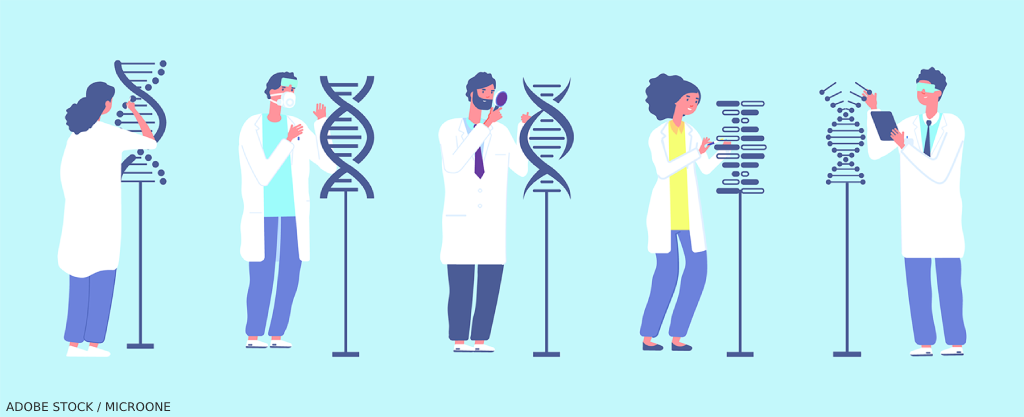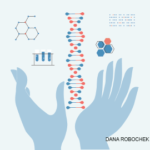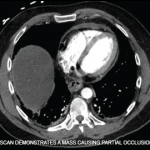 In recent years, David Beck has become a household name in rheumatology circles for the pivotal role that he played in discovering VEXAS syndrome, a monogenic, adult-onset disease that arises from somatic mutations in the UBA1 gene in hematopoietic progenitor cells. The name VEXAS is an acronym that stands for vacuoles, E1 enzyme, X-linked, autoinflammatory and somatic—terms that describe the key aspects of this condition, which can cause severe inflammatory and hematologic manifestations. While Beck and his colleagues are rightfully recognized for their unique approach to genetic research that allowed them to make this discovery (which was first reported in 2020 in 25 men with adult-onset inflammatory disease and myeloid dysplasia), they all agree that the discovery would not have been possible without the contributions of many patients who aided in the initial groundbreaking research.1 The story of Michael Milovic, one of the first patients diagnosed with the disease, shows the debt of gratitude we owe to those willing to give of themselves to help advance the cause.
In recent years, David Beck has become a household name in rheumatology circles for the pivotal role that he played in discovering VEXAS syndrome, a monogenic, adult-onset disease that arises from somatic mutations in the UBA1 gene in hematopoietic progenitor cells. The name VEXAS is an acronym that stands for vacuoles, E1 enzyme, X-linked, autoinflammatory and somatic—terms that describe the key aspects of this condition, which can cause severe inflammatory and hematologic manifestations. While Beck and his colleagues are rightfully recognized for their unique approach to genetic research that allowed them to make this discovery (which was first reported in 2020 in 25 men with adult-onset inflammatory disease and myeloid dysplasia), they all agree that the discovery would not have been possible without the contributions of many patients who aided in the initial groundbreaking research.1 The story of Michael Milovic, one of the first patients diagnosed with the disease, shows the debt of gratitude we owe to those willing to give of themselves to help advance the cause.
Michael’s Story
Michael was, for most of his life, healthy and athletic. He had passed on these traits to his children, including youngest daughter Stephanie. He was on his way to attend Stephanie’s volleyball game at La Salle University, Philadelphia, in 2009 when he developed an intense pain in his leg, nearly collapsing when getting out of his car. He went to the local emergency department and was found to have a lower extremity deep venous thrombosis.
Over the next two years, Michael developed a range of symptoms—fevers, rashes, unexplained cytopenias and auricular chondritis—that led him to Northwestern Memorial Hospital near his home outside Chicago. The doctors there were stumped, but one physician who had trained at the National Institutes of Health (NIH) suggested that Michael go there for an evaluation.
He did so and met Amanda Ombrello, MD, a clinical researcher in the Inflammatory Disease Section of the Medical Genetics Branch at the National Human Genome Research Institute, Bethesda, Md., in 2011. Michael underwent a litany of tests with Dr. Ombrello and her colleagues, but no clear diagnosis was found.
“I knew he had chondritis, but I also knew this was not relapsing polychondritis,” Dr. Ombrello recalls. “I just didn’t know what he did have.”
Michael went home to Illinois and, from 2011 to 2019, he was treated with the only medication that ever helped: prednisone. Yet he continued to decline.
In August 2019, Michael received a call from Dr. Ombrello, who had been working with David Beck to find patients whose clinical histories fit the pattern of what would come to be called VEXAS. Many aspects of Michael’s history, including his fevers, cytopenias, chondritis and response to glucocorticoids, indicated that he may have the condition, which prompted genetic testing of the blood samples he had provided at the NIH in 2011.
Genetic Mutation Found
Dr. Ombrello explained to Michael that he’d been found to have the UBA1 gene mutation and that he likely had VEXAS. The NIH team asked if he could come back to Bethesda for more testing to help researchers learn about the condition.
Michael’s wife, Nancy, recalled to me how incredibly sick he was by this time; he was dependent on blood transfusions and was too weak to tolerate a bone marrow transplant. But Michael was determined to help improve the scientific knowledge of this new disease.
“He knew he was going to be a guinea pig,” Nancy told me, “but he wanted to do whatever he could to help.” This was in keeping with Michael’s giving nature; years before, when Nancy’s mother had become physically disabled, he insisted that she move into the family’s home, where she spent the last two decades of her life.
The day before Michael was scheduled to fly to the NIH, he was still in the hospital and was told he might die if he left.
“They topped him off with a few transfusions, he signed himself out, and we got home at 11 p.m. for an 8 o’clock flight the next morning,” Nancy recounted.
Michael stayed at the NIH for more than a week and gave innumerable vials of blood, which he had in short supply.
Outcome & Legacy
When he returned to Chicago, his disease continued to progress. He had several more hospitalizations, including one in early December 2019. It was at that time that his oldest daughter Laura shared with him the news that she was pregnant. Michael was overcome with emotion as he thought of Laura becoming a mother for the first time, while realizing that he would likely never get a chance to meet this child.
Not long after learning of his daughter’s pregnancy, Michael’s doctors organized a family meeting and explained that there was simply nothing else that they could do. Michael entered into hospice care and traveled with Nancy back to his home.
A few weeks later, on Christmas Eve 2019, Michael succumbed to his disease, surrounded by those he loved.
“He wanted to live so much,” Nancy told me. “He never gave up.”
Dr. Ombrello has said that Michael “was the bravest man I have ever met.”
On July 28, 2020, Laura gave birth to a healthy baby boy and named the child Michael (Mikey for short) in honor of her father. Through their grief, Michael’s family has found strength and solace in knowing that the gift he gave to science at the end of his life was fundamental to the discovery of VEXAS and to our broader understanding of human disease.
As Laura shared with Dr. Ombrello, “If that is my father’s legacy, then it’s a pretty darn good one to have.”
 Jason Liebowitz, MD, is an assistant professor of medicine in the Division of Rheumatology at Columbia University Vagelos College of Physicians and Surgeons, New York.
Jason Liebowitz, MD, is an assistant professor of medicine in the Division of Rheumatology at Columbia University Vagelos College of Physicians and Surgeons, New York.
Reference
- Beck DB, Ferrada MA, Sikora KA, et al. Somatic mutations in UBA1 and severe adult-onset autoinflammatory disease. N Engl J Med. 2020 Dec;383(27):2628–2638.



